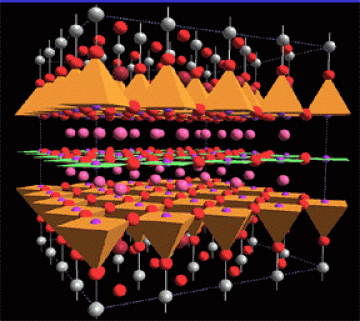In the realm of modern physics, condensed matter has emerged as an expansive frontier, confounding the expectations and imagination of scientists and laypersons alike. The fascination with this field is not merely due to its experimental triumphs but is deeply rooted in its philosophical implications and the awe-inspiring phenomena it encapsulates. It offers a captivating interplay between collective interactions of particles and emergent macroscopic properties, a domain where theoretical elegance often dovetails with empirical complexity. This article explores the enigma of condensed matter physics, positing that its very essence beckons a deeper inquiry—one that transcends the confines of laboratory walls.
At the crux of condensed matter physics lies a seemingly straightforward premise: the study of matter in its many states and phases. However, the beauty of this discipline emerges not from mere categorization but from its capacity to unveil the hidden symmetries and emergent behaviors which arise as particles coalesce. Take, for instance, the transition from a liquid to a solid, or the phenomenon of superconductivity—where electrical resistance vanishes below a critical temperature. These transitions challenge our intuitive understanding of matter and reveal the intricate choreography of atomic interactions.
Moreover, the mysteries of condensed matter extend beyond traditional boundaries. The pivotal observation of emergence—that the whole is greater than the sum of its parts—contributes to profound inquiries about reality itself. This emergent complexity raises compelling questions about the nature of heat, magnetism, and, intriguingly, information. Why does a mere aggregation of atoms manifest properties as nuanced as those experienced in daily life? The landscape of condensed matter invites us to ponder how collective behavior leads to phenomena not observable at the individual particle level.
The allure of studying condensed matter phenomena is augmented by the realization that this knowledge is not confined within academic laboratories. Rather, it reverberates through myriad facets of modern life and technology. From the superconductors used in MRI machines to the intricate behavior of novel materials such as graphene and topological insulators, the implications of condensed matter research are far-reaching. We stand on the precipice of material sciences—a realm where quantum mechanics meets engineering ingenuity, opening pathways to technological innovations that can redefine our everyday experiences.
However, the question persists: what draws researchers and the public into this captivating perplexity? As practitioners delve deeper into the arcane world of condensed matter, one cannot help but sense an underlying yearning for comprehension. The enlightenment it promises goes beyond formulas and theories—it offers glimpses into the very fabric of the universe. In a sense, the study of condensed matter physics becomes a journey of discovery that transcends empirical reassurance; it evokes a philosophical awakening, urging individuals to dismantle preconceived notions of reality.
Furthermore, the convergence of condensed matter physics with interdisciplinary fields, such as quantum information science, adds another layer of intrigue. Quantum entanglement, once merely an abstract concept, has found concrete applications in the realm of quantum computing. This synthesis of disciplines illustrates how boundaries can dissolve, revealing an inclusive landscape where physics and computation entwine. As our understanding of quantum states morphs, so too do the epistemological frameworks that delineate classical physics from its quantum counterpart.
The experimental hallmarks of condensed matter research also present a thrilling paradox. The controlled environments of laboratories provide a unique transformative zone, yet they mirror the broader existential quandaries about the nature of boundaries themselves. As scientists manipulate variables to discern the characteristics of materials, they unwittingly engage in a dialogue with the cosmos, questioning not only the microstructures but the overarching philosophical tenets about existence. Each experiment transcends confinement, ushering forth insights that ripple through both scientific inquiry and human understanding.
Turning the lens towards the future, the uncharted territories of condensed matter remain ripe for exploration. Quantum phase transitions, non-equilibrium dynamics, and the physics of disordered systems not only challenge existing theoretical frameworks but beckon a recalibration of our fundamental paradigms. The notion of phase transitions, particularly, invites intense scrutiny and speculation. What are the implications of induced phase changes in complex systems, and how might this inform our understanding of phenomena such as climate change or economic cycles?
As we traverse the continuum from the microscopic to the macroscopic, the pertinence of condensed matter physics cannot be overstated. The universality of its principles manifests across various scales and phenomena, offering coherence to what may seem disparate. It engenders a holistic perspective that encourages us to embrace interconnectedness—a realization that each experimental endeavor, while ensconced within four walls, is fundamentally part of the larger tapestry of our universe.
In conclusion, the field of condensed matter physics serves as both a scientific and philosophical lens through which to contemplate existence. The allure of liberated inquiry within this domain fosters a dialogue between the known and the unknown, urging us to question not only what we perceive but the very foundations of that perception. As the boundaries constrict and expand, both literally and metaphorically, condensed matter stands poised to illuminate the mysteries of our universe, beckoning a generation of thinkers determined to unravel the complexities of reality. Each experiment is not merely a quest for knowledge, but a profound engagement with existence itself, ensuring that the walls of the laboratory do not confine but liberate the inquiry into the nature of matter.








